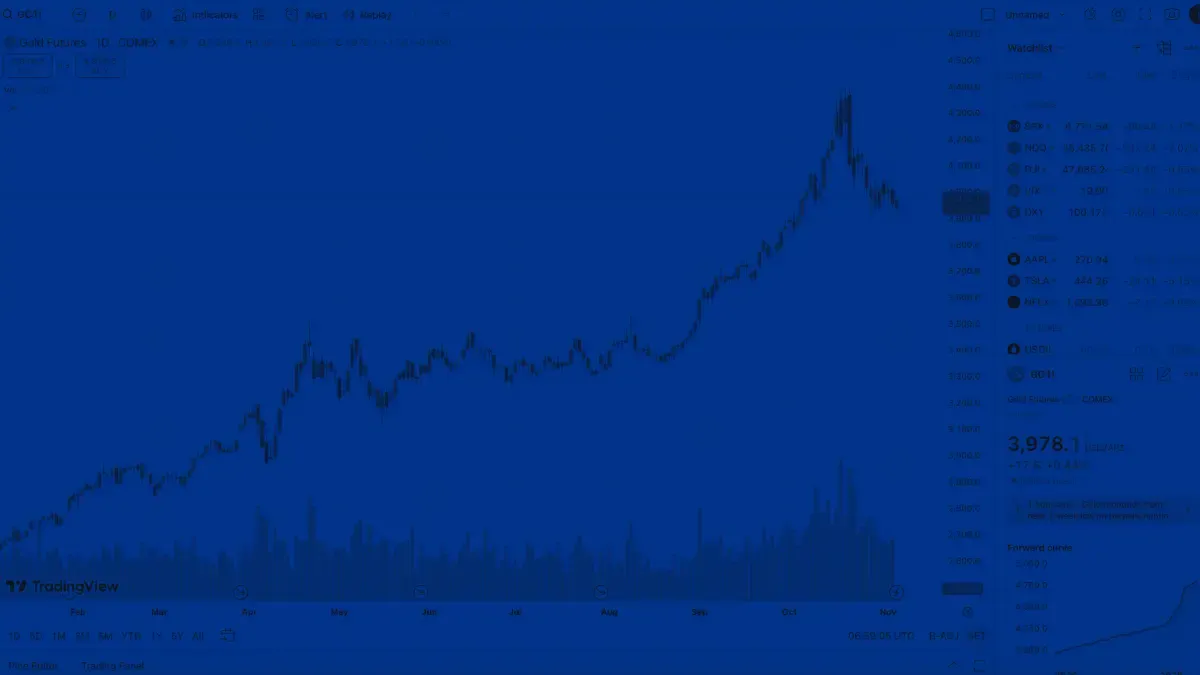Daily Loss Limits (DLLs) function as critical safety mechanisms in futures trading. These predetermined thresholds specify the maximum amount you can lose during a single trading day before activity stops. At MyFundedFutures, DLLs create protective guardrails that prevent catastrophic losses while enforcing disciplined trading approaches. For traders progressing beyond evaluation stages toward consistent profitability, mastering your relationship with Daily Loss Limits marks a significant milestone. These limits safeguard both the firm's capital and your mental state during volatile market conditions, protecting your account and sanity simultaneously.
What is a Daily Loss Limit? The Foundation of Risk Control
A Daily Loss Limit establishes the maximum financial loss permitted within a single trading day. Unlike maximum drawdown metrics that measure decline from peak account value or end-of-day (EOD) limits that assess closing balances, Daily Loss Limits track intraday performance from market open to close. They function as financial circuit breakers, automatically halting trading activity when losses reach predetermined thresholds.
At MyFundedFutures, DLLs vary strategically across account types:
-
Starter 50K accounts: $1,200 Daily Loss Limit
-
Starter Plus accounts: No Daily Loss Limit, which may appeal to traders who prefer greater intraday flexibility. This structure may not be suitable for all trading styles
-
Expert accounts: Higher thresholds with greater contract flexibility
-
Evaluation-to-Live accounts: Scaling structure starting at $500 for $2,000 accounts
These limits create mandatory stopping points during adverse market conditions. When you hit your Daily Loss Limit, the MyFundedFutures system prevents further simulated trading for that day, creating a cooling-off period that protects both capital and mental stability.
We implement static daily loss amounts that remain consistent regardless of winning streaks. This clarity helps you plan position sizes and risk allocations without constantly recalculating shifting targets.
Each Daily Loss Limit connects directly to account size and maximum contract allowances. For instance, the $1,200 DLL on a Starter 50K account aligns with the 3-mini contract maximum, creating appropriate risk-to-capital ratios that prevent excessive leverage.
Dual Protection: Firm Capital and Trader Psychology

Daily Loss Limits serve dual protective functions: safeguarding the prop firm's capital while preserving your psychological equilibrium.
From MyFundedFutures' perspective, DLLs prevent catastrophic outlier days that could deplete capital reserves. The company manages an extensive portfolio of trader accounts ranging from $50,000 to $150,000. Without Daily Loss Limits, a single day of poor judgment could wipe out months of careful trading. MFFU establishes these limits not to restrict trading freedom but to maintain operational stability across their entire ecosystem of funded traders.
For you as a trader, Daily Loss Limits create mandatory pauses during extreme market volatility or compromised decision-making. Trading psychology research demonstrates that your worst decisions typically occur after experiencing losses, with emotional responses triggering oversized positions, abandoned strategies, and revenge trading behaviors.
The psychological benefits extend beyond mere capital preservation. Knowing your maximum potential loss creates mental clarity during turbulent market conditions. This certainty allows you to execute strategies without the paralyzing fear of unlimited downside risk. Your decision-making improves when operating within structured risk parameters rather than undefined loss potential.
Limiting losses through DLLs also extends trading longevity. The fastest way to end a trading career comes from taking outsized risks that deplete capital. MyFundedFutures' structured approach protects both their business model and your trading future.
When Traders Hit Daily Loss Limits: Common Scenarios

Most Daily Loss Limit breaches at MyFundedFutures follow predictable patterns. Recognizing these scenarios helps you spot warning signs before catastrophic losses occur:
Revenge Trading
After initial losses, you might double position sizes or abandon risk parameters, attempting to "win back" losses quickly. This emotional response accelerates losses and frequently triggers DLL breaches. The psychological drive to recover losses often leads to abandoning tested strategies.
Over-Leveraging
Exceeding appropriate contract sizes for your account capacity represents another primary DLL trigger. Consider a $50,000 Starter account trading 3 E-Mini contracts (the maximum allowed). This position risks approximately $400 per point of market movement. Just 3 points against such positions consumes nearly the entire $1,200 Daily Loss Limit. The contract sizing limits on MFFU accounts exist specifically to prevent this scenario, but traders who use their maximum allowance without proper stop placement regularly hit DLLs.
Market Volatility Events
Economic data releases, Federal Reserve announcements, or unexpected news create market conditions that overwhelm stop-loss orders through slippage. These events generate price gaps that bypass your intended exit points, causing losses exceeding planned risk parameters. For Starter and Expert accounts, MyFundedFutures prohibits trading during Tier 1 news events specifically to prevent these DLL breaches (Starter Plus accounts are exempt from this restriction).

Abandoning Stop Losses
MyFundedFutures reports that traders frequently disable stop losses after seeing prices approach but not trigger their predetermined exits. This dangerous practice removes the very mechanisms designed to prevent hitting Daily Loss Limits. Without mechanical stops, emotional decision-making takes over, frequently resulting in larger losses than originally planned.
Trading Session Fatigue
Extended trading sessions without breaks lead to deteriorating decision quality. Attempting to recover morning losses through afternoon sessions often results in hitting Daily Loss Limits during final trading hours when judgment becomes compromised through mental fatigue. MFFU's trading hours from 18:00 to 16:10 EST create a wide window where fatigue can impact performance.
Converting DLL Breaches into Trading Improvement
Hitting a Daily Loss Limit provides critical feedback when approached correctly. Some experienced traders use DLL breaches as opportunities for performance review and risk management refinement.
After breaching your DLL, conduct this systematic analysis:
- 1.
Identify which specific trades contributed most significantly to losses
- 2.
Calculate the percentage of losses from each position
- 3.
Determine whether losses stemmed from stop placement, position sizing, or market conditions
- 4.
Document exact times when losses accelerated
- 5.
Compare the losing session against your trading plan to identify deviations
This forensic approach typically reveals specific patterns: trading outside your planned market hours, holding positions through high-impact news events, or increasing size after initial losses.
Consider these illustrative examples on how to transform DLL breaches into opportunities to improve strategy:
-
A trader hitting multiple DLLs discovered 78% of losses occurred during the first 30 minutes after major economic releases. Their solution: implementing a mandatory 15-minute waiting period after news events, reducing trading losses by 43%.
-
Another funded trader established a "three-strike rule" after analyzing DLL patterns. After three consecutive losing trades, they now reduce position size by 50% for the remainder of the session, preventing the loss acceleration that previously triggered violations.
-
One Expert account holder discovered their DLL breaches consistently happened when trading beyond four consecutive hours. Their solution: mandatory 30-minute breaks after each four-hour segment, resulting in zero DLL breaches over the subsequent quarter.
The reset feature at MyFundedFutures provides another opportunity for improvement. Rather than viewing the $97 reset fee as a penalty, treat it as part of the learning process involved in risk-managed trading evaluation. Each reset generates specific data about what doesn't work, gradually refining your approach until you establish sustainable trading patterns.
** Place hard stops that ensure no single trade can consume more than 20% of your Daily Loss Limit. For a $1,200 DLL, ensure maximum loss per trade stays below $240, regardless of contract size or market conditions.

Mastering the Daily Loss Limit Mindset
The psychological freedom from clearly defined risk parameters creates mental space for strategic thinking. When you know exactly how much you can lose, your decisions become clearer and more objective. Traders who progress fastest from evaluation to funded status at MyFundedFutures typically demonstrate remarkable consistency in relation to their DLLs.
Internal data shows that traders maintaining losses below 50% of their Daily Loss Limit achieve funded status 2.3 times faster than those frequently approaching maximum thresholds. This striking difference suggests that DLL management serves as a reliable indicator of overall trading discipline.
Your transition from viewing Daily Loss Limits as frustrating constraints to seeing them as performance metrics marks a crucial psychological shift. Elite traders monitor their relationship with daily risk thresholds as carefully as they track profit metrics.
For tomorrow's trading session, try this approach: Rather than focusing exclusively on profit targets, establish a goal of keeping maximum drawdown below 30% of your Daily Loss Limit. This mindset shift reinforces risk management discipline that distinguishes consistently profitable traders.
By embracing rather than resisting the structure provided by Daily Loss Limits, you protect both your account and your mental resilience---the two most precious assets in your trading journey.
Ready to dive in?
Explore our challenge accounts, pick the one that fits you best, and start your journey to getting funded.
Explore AccountsThis material is provided for educational purposes only and should not be relied upon as trading, investment, tax, or legal advice. All participation in MyFundedFutures (MFFU) programs is conducted in a simulated environment only; no actual futures trading takes place. Performance in simulated accounts is not indicative of future results, and there is no guarantee of profits or success. Fewer than 1% of participants progress to a live-capital stage with an affiliated proprietary trading firm. Participation is at all times subject to the Simulated Trader Agreement and program rules.
Frequently Asked Questions
Rate this article
Related Posts
Read our most popular posts
Which Prop Firms Offer Daily Payouts and How Do They Work?
Daily payout prop firms let traders withdraw profits far more frequently than traditional models, sometimes even from the very first funded day. Instead of waiting weeks for a payout cycle, traders can request withdrawals every day, subject to rules on drawdown, buffers, and minimum amounts. This guide explains how daily payout structures work, which futures prop firms are known for fast withdrawals, what to watch out for in the fine print, and how MyFundedFutures’ Rapid plan fits into this newer payout landscape.
5 Best Prop Firms With TradingView Integration
TradingView's powerful charting tools and real-time data make it a favorite among futures traders, but not every prop firm lets you trade directly from your charts. We've identified five firms that offer true TradingView integration, making it easy to analyze, execute, and scale without switching platforms.
What Is MyFundedFutures Scale Account and Is It The Right Plan For You?
The MyFundedFutures Scale Account is a middle-tier evaluation plan that balances affordability with growth potential. The scale plan offers weekly payout opportunities with increasing withdrawal limits, no daily loss cap, and a clear path to live funding after just five consecutive payouts.


